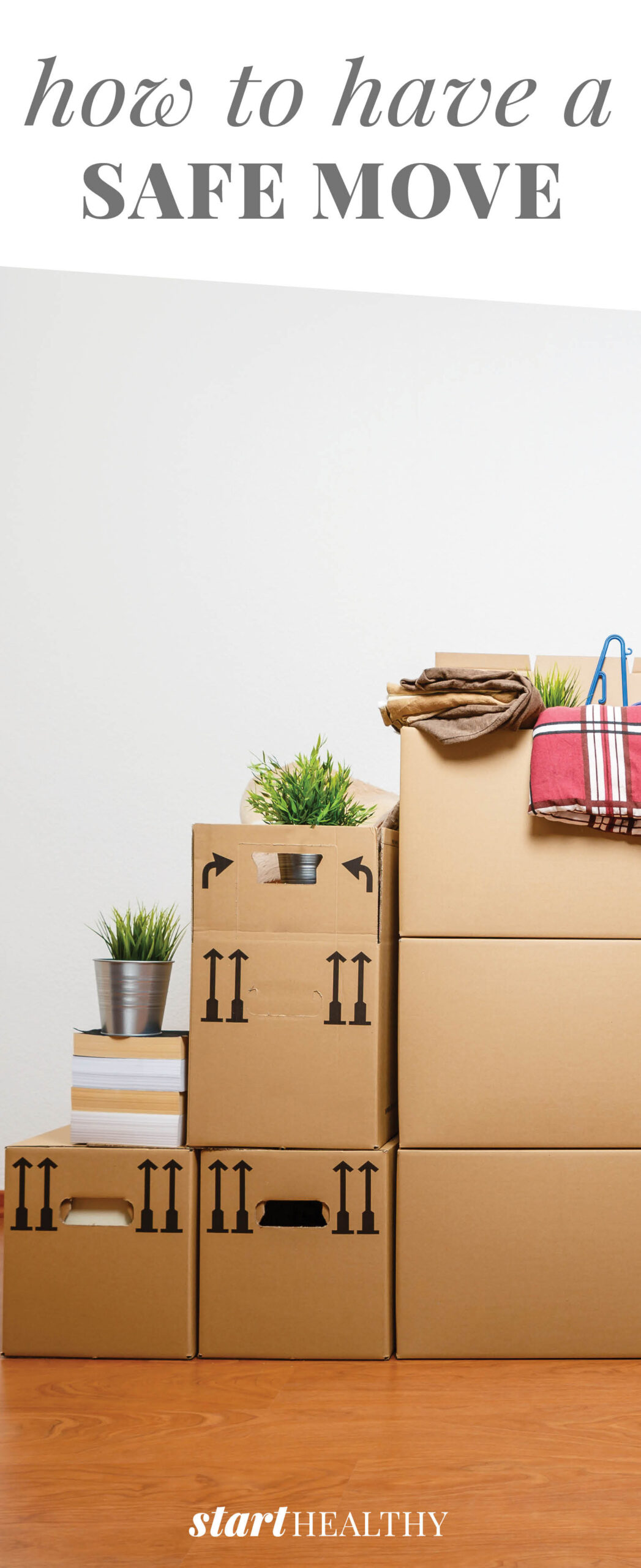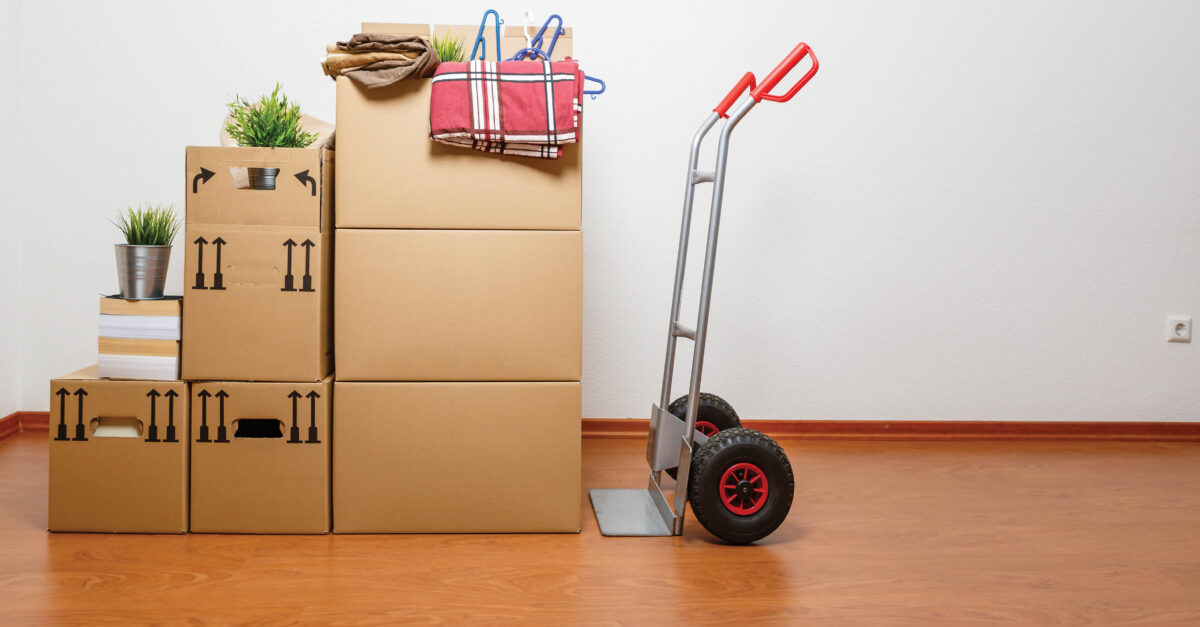How to Have a Safe Move
Moving is never easy for anyone. Although it can be a super exciting day, there is always a possibility that something could go awry, including getting injured. Taking the necessary precautions to prevent moving-day accidents will help ensure your moving day is a success.
Patrick Sipera, sales manager for the greater Philadelphia region for Olympia Moving and Storage, has seen his share of moving mishaps in the decade he has been in the industry. He recommends taking certain steps to have a safe move, whether you do it yourself or hire professionals.

What is the best type of clothing to wear during a move?
First and foremost, you want to be comfortable. Dress as if you are going to the gym with a lightweight top; comfortable shorts, sweatpants, or leggings; and well-fitting sneakers or shoes. Be careful with hooded sweatshirts or sweatpants that have hanging drawstrings to prevent getting caught in a dangerous situation. Also, be mindful of the jewelry you are wearing as it can fall off, break, or get caught on a box or furniture.
What should the maximum box weight be to avoid injury?
For most people, a forty-to-fifty-pound box should be the maximum weight. If you have had previous back or knee injuries, drop the weight to thirty or thirty-five pounds and consider wearing a back-support belt.
We tend to pack boxes to the very top, making them as full as possible, but it’s better to have more lighter-weight boxes and fewer heavier ones. Because not all boxes are created equal, the type of items you are packing will depend on the quality and weight of the box you should use; if you pack too many heavy items in a box that is meant for lighter items, you can end up with a collapsed box at your feet or overextending yourself, either of which can result in injury. A good rule of thumb is to periodically check the box’s weight as you pack to be sure you are not making it too heavy.
What’s the best position for lifting and putting down boxes?
Stabilizing your body before lifting anything is the number one way to help prevent an injury. You can do this by making sure you always lift from your legs rather than your back. Be sure to engage your core muscles while lifting because this will help to take the pressure off your back and upper body. Also, never pick up boxes that are out of your comfort zone. Have someone assist or do it for you.

What are the best moving equipment and tools to use?
Moving equipment such as hand trucks, dollies, rolling bins, ramps, and moving straps can help lighten the load by allowing you to move multiple boxes or items at one time. If you plan on doing your own move, it’s important to understand how to utilize these items ahead of time.
As a professional moving company, we have access to all the necessary moving tools and equipment, and our moving crews are trained on how to properly use them. For example, most doorways have thresholds, which can make it very difficult to lift a hand truck over them. If the boxes are too heavy, you can hurt your back, feet, or legs, or even damage the floor itself. Also, put down some type of floor protection to prevent slipping, and safeguard the floors in high-traffic areas.
What is the most common cause of moving-day injuries?
Although our crew is trained to be able to move around safely in any house, we tend to see a lot of clutter with no clear pathway for the movers to get in and out efficiently. For people doing it themselves, trips and falls occur due to clutter, blocked pathways, or even extension and electrical cords not yet unplugged and packed away. It’s important to always look straight ahead, walk forward or backward (not sideways), use deliberate movements, and lift what you comfortably can. If the lift is not working, put down the load and readjust to avoid hurting yourself or damaging the item. Consider wearing moving gloves, which can be quite helpful in providing a firmer grip when moving items.
In addition, exhaustion is a big reason why people get hurt during their move. It’s not just about moving out of the residence; it’s also about transporting your belongings safely onto the truck, unloading them, and then moving them into your new home. It’s hard work, so if you are doing the move without the help of a professional moving company, be sure to pace yourself.
What advice would you give to avoid the last-minute rush?
Plan and schedule your packing time far in advance. When I ask people what they wished they would have done differently, they say they wished they would have put more time and thought into the planning process. Many feel the last-minute rush caused them a lot of stress, often resulting in minor mishaps such as tripping over boxes or items blocking the main walkways. Even hastily doing last-minute packing and box taping can cause injury to hands or fingers due to careless handling of the scissors, tape gun, or box cutter.

What is the homeowner’s role with a moving crew?
If you’re using a professional moving crew, a foreman will discuss with you how they work, what to expect, and what your wishes are. We recommend that the homeowners remain clear of the movers but be nearby if we have any questions or concerns. Also, if you have small children, pets, or both, it’s best to see if someone can watch them during the move as it’s easy for someone to get hurt.
When planning a move, either on your own or with a crew, you must anticipate any obstacles that can pop up. I like to call it the six Ps: Proper, prior planning prevents poor performance.
For more info, visit olympiamoving.com
Top 5 Tips to Avoid Moving-Day Injuries
- Take your time, and don’t underestimate how long it will take to complete the move.
- Getting tired can increase the chances of getting injured, so be sure to take frequent breaks and stay hydrated and well-nourished.
- Be extremely mindful of how you are lifting boxes and other heavy items.
- Remove clutter to create a clear pathway and prevent trips and falls.
- Prepare for the unexpected, such as a rainy day, which can make the outside steps and walkways slippery.









